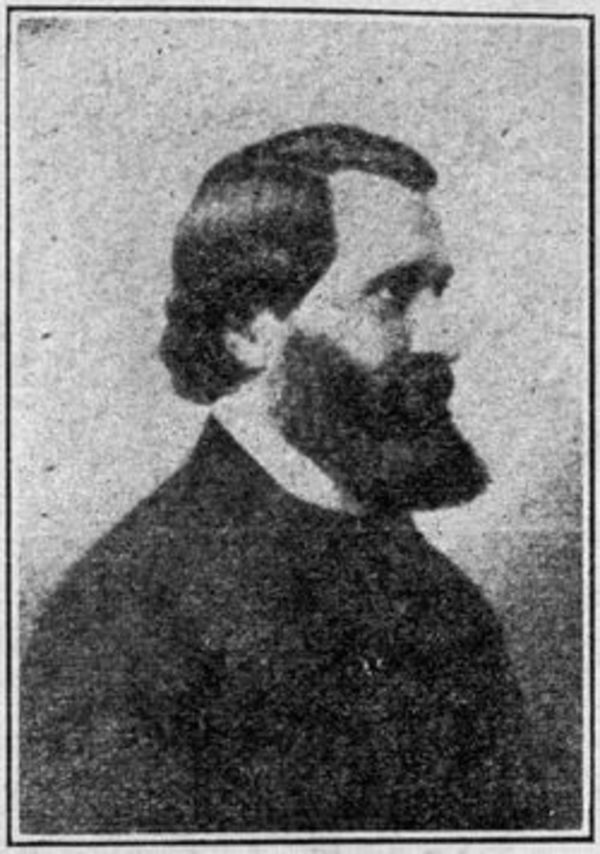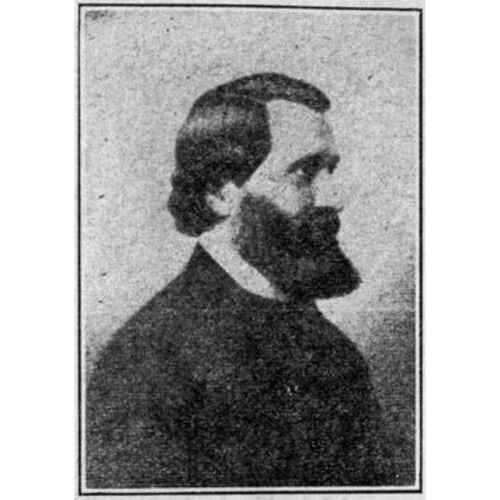
Source: Link
CHIROUSE, EUGÈNE-CASIMIR (named at birth Eugène), Roman Catholic priest, Oblate of Mary Immaculate, and missionary; b. 15 June 1854 in Bourg-de-Péage, France, son of Félicien Chirouse, a hatter, and Pauline Vallon; d. 3 Feb. 1927 in Vancouver.
After attending the Oblate juniorate at Notre-Dame de Lumières in France, on 28 July 1873 Eugène-Casimir Chirouse entered the Oblate noviciate at Notre-Dame-de-l’Osier, where he made his religious profession on 29 July 1874. He took his perpetual vows at the Autun scholasticate on 15 Aug. 1875 and was ordained there on 7 June 1879. Sent to British Columbia, where his uncle Eugène-Casimir Chirouse was serving as an Oblate missionary, he arrived in New Westminster in October 1879 with fellow Oblate Jean-Marie-Raphaël Le Jeune.
Chirouse spent the winter at St Charles’s mission in New Westminster and then was assigned to St Mary’s mission, where he would serve until 1927. While stationed at St Mary’s, he was active in ministering to First Nations groups farther afield; he made three visits each year to communities on the coast as far north as Bute Inlet and in the interior up to Lillooet. He also participated in the large religious gatherings the Oblates organized for Indigenous people. Perhaps the most significant of these for him was his uncle’s funeral, held at St Mary’s in June 1892 and attended by 1,200 Indigenous people.
Earlier in 1892 Chirouse had been arrested in an incident at La Fontaine (Fountain) that redounded not only on him, but also on Oblate practices in British Columbia. On 18 March 1892 the council of Lillooet band had asked Chirouse, who had just ended a mission there, for advice on the punishment of Lucy Curry and a young man who had been “detected in improper intimacy.” Chirouse recommended 15 lashes and left the council to carry out the sentence. The next morning he continued on his course and was thus unaware of Lucy’s repeat offence, and punishment again by whipping, on 19 March, when she was ill. The incident came to the attention of Lillooet justice of the peace John Martley. On 29 March, Chirouse, Chief Kilapoutkue (Killapowtkin), and four other men of the Lillooet council were charged with assault. All four were arrested and, after a preliminary inquiry before Martley, were remanded to a higher court for trial. Under the Speedy Trials Act, Chirouse was tried by county court judge Clement Francis Cornwall on 3 May 1892. Acting without a jury, Cornwall found Chirouse guilty of causing grievous bodily harm and sentenced him to one year in jail. Kilapoutkue and the four other men were also found guilty and received sentences varying from two to six months. A public outcry supporting Chirouse ensued and several editorials and open letters appeared in provincial newspapers. In May, Bishop Paul Durieu* personally appealed to Governor General Lord Stanley*. The sentences of the six men were ultimately revoked in July by the federal justice minister, Sir John Sparrow David Thompson*.
For the Oblates and most interested British Columbians, the primary issue was the use of physical coercion by Indigenous leaders and the sanction and encouragement of it by the Oblates. A commonly repeated defence of Chirouse was that First Nations chiefs had a traditional right to use corporal punishment to control members of their communities. In a notice of 10 Oct. 1873 Chief Justice Matthew Baillie Begbie* had recognized the right of chiefs to use such measures to ensure social peace; justices of the peace were not to interfere except in cases of excessive severity. In issuing similar notices to individual Oblates, however, he also seems to have sanctioned their right to promote physical punishment, which they did. By 1876 Begbie had decided that such punishment could be meted out only for legal infractions, not for sins. Historians have come to see “force and coercion” as underpinning what has been called the “Durieu system,” a two-pronged method of proselytization that aimed at repressing vice and sin and forming true Christian spirituality in Indigenous communities. Chirouse’s conviction, it has been argued, heralded the end of the Durieu system in British Columbia: the Oblate use of force would no longer be sanctioned by the government or countenanced by the populace. A close examination of Durieu’s instructions to his missionaries, however, suggests that in seeking to achieve both goals of the two-pronged system, he did not rely solely on physical coercion.
Despite his long service as a dedicated missionary and educator in British Columbia, Eugène-Casimir Chirouse is best remembered for the events of 1892. After his sentence was revoked, he returned to St Mary’s, where he served as director of the school and at various times as superior of the mission. In the 1880s the mission school had had an average of 25 students. It became a government-funded residential school for Indigenous pupils in 1893, after which the average attendance rose to 62 students. Concentrating on agricultural instruction for boys and domestic training for girls, its pupils came from the Fraser Canyon region. Chirouse continued to work there until mid January 1927, when he was admitted to St Paul’s Hospital in Vancouver, suffering from carcinoma of the stomach. He died three weeks later and was buried in the Oblate cemetery in Mission.
Arch. Départementales, Drôme (Valence, France), État civil, Bourg-de-Péage, 16 juin 1854. Arch. Deschâtelets, Oblats de Marie-Immaculée (Ottawa), HE 1791.D96C 17 (copie de lettres au père J.-M.[-J.] Le Jacq, 27 nov. 1883–25 févr. 1884, sur la “Direction des sauvages”); P 1-7296 (fonds de la province oblate St Peter, 1850-90); P 1091-1104 (cas de Lucie). BCA, GR-2951. Roman Catholic Archdiocese of Vancouver Arch., Early bishops’ corr. Gaston Carrière, Dictionnaire biographique des oblats de Marie-Immaculée au Canada (4v., Ottawa, 1976–89), 1: 201. E. McC. Lemert, “The life and death of an Indian state,” Human Organization (New York), 13 (1954–55), no.3: 23-27. Month (London), June 1892. Paul Tennant, Aboriginal peoples and politics: the Indian land question in British Columbia, 1849–1989 (Vancouver, 1990). Margaret Whitehead, The Cariboo mission: a history of the Oblates (Victoria, 1981).
Bibliography for the revised version:
Can., Parl., Sessional papers, annual report of the Dept. of Indian Affairs, 1897. V. J. McNally, The Lord’s distant vineyard: a history of the Oblates and the Catholic community in British Columbia (Edmonton, 2000).
Cite This Article
Lynn Blake, “CHIROUSE, EUGÈNE-CASIMIR (Eugène),” in Dictionary of Canadian Biography, vol. 15, University of Toronto/Université Laval, 2003–, accessed December 31, 2025, https://www.biographi.ca/en/bio/chirouse_eugene_casimir_15E.html.
The citation above shows the format for footnotes and endnotes according to the Chicago manual of style (16th edition). Information to be used in other citation formats:
| Permalink: | https://www.biographi.ca/en/bio/chirouse_eugene_casimir_15E.html |
| Author of Article: | Lynn Blake |
| Title of Article: | CHIROUSE, EUGÈNE-CASIMIR (Eugène) |
| Publication Name: | Dictionary of Canadian Biography, vol. 15 |
| Publisher: | University of Toronto/Université Laval |
| Year of publication: | 2005 |
| Year of revision: | 2025 |
| Access Date: | December 31, 2025 |



